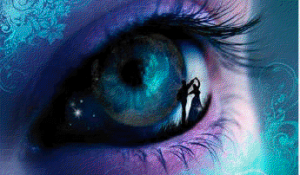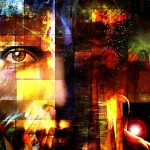 Back in 1995 I was sweet-talked by my then boyfriend into seeing the movie Strange Days, a sci-fi flick (directed by James Cameron, produced by Kathryn Bigelow, staring Ralph Fiennes and Juliette Lewis.) I’m not a big sci-fi fan…more the chick-flick type…but I must admit this movie left it’s mark and has
Back in 1995 I was sweet-talked by my then boyfriend into seeing the movie Strange Days, a sci-fi flick (directed by James Cameron, produced by Kathryn Bigelow, staring Ralph Fiennes and Juliette Lewis.) I’m not a big sci-fi fan…more the chick-flick type…but I must admit this movie left it’s mark and has
As I peeled myself off the walls of the movie theatre and made my exit, I fantasized about how incredible it would be if a technology like that actually existed…and how it could (radical thought) be used for good. I imagined we could use it as an instant empathy download when we’re at our wits end trying to figure out why someone behaves the way they do—like a short-cut compassion-creator that would otherwise require an exhaustive 20 mile-walk in someone’s moccasins.
Cut to April 7th, 2013 when I woke up to an avalanche of e-mails, text messages, voice mails, and Facebook notices alerting me to the fact that fact is stranger than fiction…and Strange Days are, indeed, here. In a LA Times article I read about a group of Japanese neuroscientists from ATR Computational Neuroscience Laboratories in Kyoto created a breakthrough computer program that gives us a view into each other’s dreams.
The researchers hooked three volunteers to electroencephalograph machines (EEG—or Lie Detector machines) to observe the electrical activity of their neurons. At the same time these volunteers were sequestered into a MRI (magnetic resonance imaging) machine to track their dreaming brain’s blood flow. Once the subjects fell asleep the EEG readings displayed indications of hypnagogic hallucination (early stage of dreaming). The researchers woke the subjects every six minutes (about 200 times) to get verbal accounts of their dreamscapes.
The volunteers’ groggily mumbled things like: “I saw a person and I hid a key in a place between a chair and a bed and someone took it.”
As we do in the realm of dream interpretation, the researchers focused on the nouns in these descriptions. They combined the nouns into categories represented by images — a human face, a key, and furniture. They wrote a computer program based on the feedback from the MRI and the EEG to find links between brain activity patterns and specific images. Soon thereafter, the computers themselves learned to decode dream imagery with an average accuracy of more than 60%.
This leads to the awareness that if we can “see” what we are dreaming, then we can see what we are thinking (and feeling) in our waking lives, as well…eerily similar to Strange Days, don’t you think?
Even if people like Ralph Fiennes’ character take advantage of this technology, I think it can’t help but be a catalyst to assist us to become a more empathic, compassionate, aware, even….dare I say, enlightened civilization. Strange (in a good way) days are definitely here.











